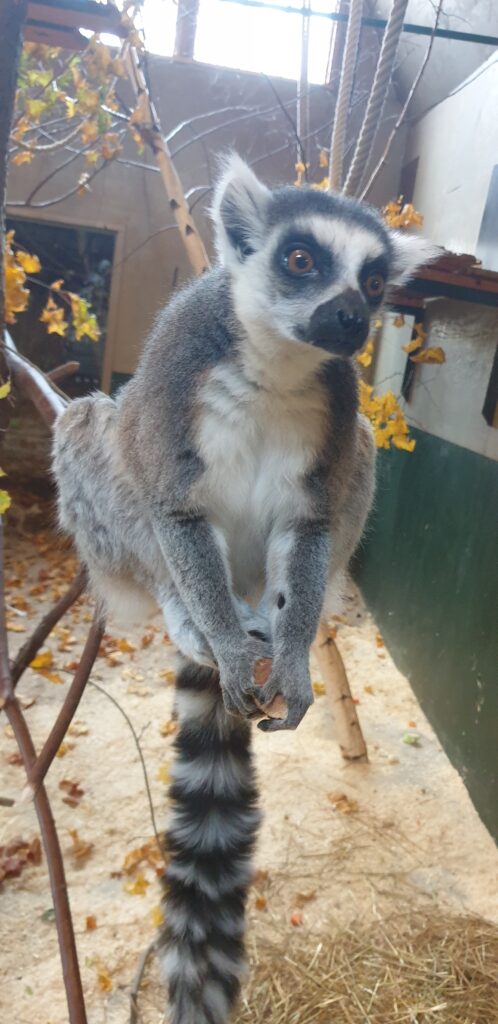The present study provides evidence for the cognitive skills of white-faced saki monkeys (Pithecia pithecia) and ring-tailed lemurs (Lemur catta) through their success in three cognitive tasks. The first test showed that both species are capable of object permanence by consistently locating a hidden food reward after observing it. The second test showed that both species are capable of visual associative learning by consistently choosing their associated visual stimulus in order to obtain a food reward. The third test showed that both species are capable of visual stimulus reversal learning by repeatedly adapting to changes in the reward value of a given stimulus.
The sakis performed better with their original assigned colour in the visual associative learning test and the visual stimulus reversal learning test, while lemurs were more efficient at reversal colours. This suggests a higher cognitive flexibility in ring-tailed lemurs compared to white-faced sakis. Of course this conclusion is drawn from a very small sample size, but provides insight to a possible explanation. Nonetheless, both species demonstrated cognitive flexibility to a degree, which is applicable to foraging and predator avoidance behaviour in both species’ natural environments.
The results of this study are consistent with similar cognitive studies of other primates and non-primate mammals. For instance, the visual stimulus reversal learning test has been performed successfully in great apes such as chimpanzees, marine mammals such as harbour seals, and birds such as pigeons.



The present study presents evidence for the adaptive learning ability of these species, legitimizing the pursuit of replicating other cognitive tests, previously performed on other primate taxa, such as learning set formation. Lemurs specifically represent a taxon that is further distanced from great apes, both phylogenetically and geographically. Because of this, it is important to understand the similarities and differences between lemurs and other primates with regard to cognition.
Ring-tailed lemurs are classified as Endangered on the IUCN red list, with their current population trend decreasing. Understanding more of the general cognitive ability of lemurs (and other primate taxa) can bring more insight into conservation strategies. An example of this is the cognitive flexibility that was analysed in the present study. Observations of great apes suggest that several anthropogenic stimuli can be associated with danger, assisting the animals in coping with human threats. Knowing this, furthering the knowledge of associative learning in threatened primate species could aid conservationists in human-wildlife conflict environments, or in reintroduction and rehabilitation environments. Allowing the animal to associate and adapt to a new environment could enhance the survival of those species using methods such avoidance learning.
The study of cognition in animals can be directly linked to animal welfare, as cognitive challenge as an environmental enrichment can closely reflect the everyday challenges an animal might encounter in their natural environment . Observations of animals in captivity show that many animal species are willing to participate in cognitive challenges without a reward, seemingly for the activity of overcoming the challenge alone. In order to design efficient and effective cognitive enrichment for primates in captivity, proper understanding of the cognitive capabilities and limits of the specific primate taxa is required. Therefore, it is important to examine the underrepresented taxa within the subject of primate cognition, such as strepsirrhine and platyrrhine and primates.

